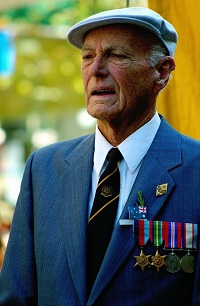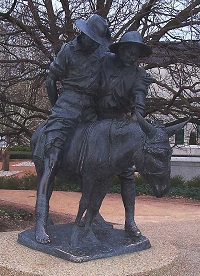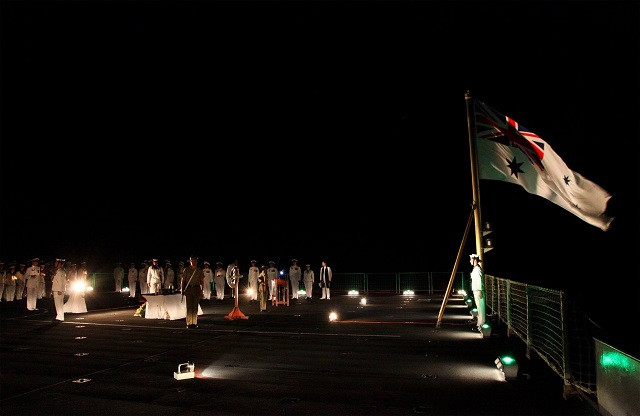ANZAC Day: Lest We Forget
This year marks the 100th anniversary of the landings at Gallipoli and, in turn, the birth of the Anzac spirit – the “unseen, unpredictable and unquenchable thirst for justice, freedom and peace.”
ANZAC Day, April 25, marks the anniversary of the first campaign that led to major casualties for Australian and New Zealand forces during the First World War. The acronym ANZAC stands for Australian and New Zealand Army Corps, whose soldiers were known as ANZACs.
Anzac Day remains one of the most important national occasions of both Australia and New Zealand. It is a set aside to remember and to pay homage to fallen comrades.
 Over 500 New Zealand Defence Force (NZDF) personnel will represent New Zealand at Anzac Day services across the world in places as diverse as Antarctica, Belgium, London and Turkey.
Over 500 New Zealand Defence Force (NZDF) personnel will represent New Zealand at Anzac Day services across the world in places as diverse as Antarctica, Belgium, London and Turkey.
The Chief of Defence Force, Lieutenant General Tim Keating, said “In New Zealand and Australia, we gather on April 25 every year to acknowledge the sacrifice of all those who have died in war and the contribution of the men and women who have served in all conflicts in both combat and peace-keeping roles.”
Dawn Service
After the First World War, returned soldiers sought the comradeship they felt in the quiet, peaceful moments before dawn. With symbolic links to the dawn landing at Gallipoli, a dawn ceremony has become a common form of ANZAC Day remembrance since 1927.
Typical modern dawn services follow a pattern that is now familiar to generations of Australians: introduction, hymn, prayer, an address, laying of wreaths, recitation, the playing of the Last Post, a minute of silence, Reveille and the playing of both the New Zealand and Australian national anthems. In Australia, sprigs of rosemary are often worn on lapels and in New Zealand poppies are worn.
The Ode
.jpg) They shall grow not old, as we that are left grow old;
They shall grow not old, as we that are left grow old;
Age shall not weary them, nor the years condemn.
At the going down of the sun and in the morning
We will remember them.
The Ode comes from For the Fallen, a poem by the English poet and writer Laurence Binyon which was published in London in The Winnowing Fan: Poems of the Great War in 1914. This verse, which became the Ode for the Returned and Services League, has been used in association with commemoration services in Australia since 1921.
The phrase “lest we forget” is often added as a final line at the end of the ode and repeated in response by those listening.
Merchant Navy remembered
The day was born out of the Gallipoli campaign, and it is one in which the merchant navy played a significant role. Merchant ships took troops to Gallipoli, and in many cases landed troops on the beach at ANZAC Cove in the ships’ lifeboats manned by merchant seamen, who also came under fire from the Turkish guns. These same men and boats took the wounded to hospital ships waiting offshore.
Words from John Kerry, U.S. Secretary of State
“On behalf of President Obama and the people of the United States of America, it is my pleasure to extend our warmest regards, this April 25th, to the people of Australia and New Zealand on this very special ANZAC Day,” said John Kerry, U.S. Secretary of State, marking the occassion.
 “This year marks the 100th anniversary of Allied forces landing on the Gallipoli peninsula. The countless acts of bravery and heroism, demonstrated over ten months of battle on shores thousands of miles away, ultimately gave rise to a new national consciousness in Australia and New Zealand
“This year marks the 100th anniversary of Allied forces landing on the Gallipoli peninsula. The countless acts of bravery and heroism, demonstrated over ten months of battle on shores thousands of miles away, ultimately gave rise to a new national consciousness in Australia and New Zealand
“This ANZAC spirit, one defined by endurance, courage, and mateship, still lives on in a shared commitment to individual rights and the rule of law, open and fair economic systems, and democratic freedoms. The United States is proud of our enduring cooperation with Australia and New Zealand in pursuit of these common ideals. We continue to work together on a wide range of issues, such as providing disaster relief and supporting good governance in the Pacific; promoting free trade and prosperity through the Trans-Pacific Partnership; and countering violent extremism and defending fundamental liberties at home and abroad.
“As we honor all members of the Australia and New Zealand Army Corps, past and present, know that the United States stands firmly with Australia and New Zealand as a true friend and partner. We will forever remember the heroic efforts of 1915 and the brave men and women who made the ultimate sacrifice in defense of freedom.
“I wish you the best on this 100th ANZAC Day. May we forever uphold the ANZAC spirit in our pursuit of peace and prosperity around the world.”
 AE2
AE2
Allied forces aimed to undertake action at Gallipoli to relieve the hard pressed Russians by taking Turkey out of the war. The original plan of a naval attack through the Dardanelles Strait, advancing across the Sea of Marmara to Istanbul, suffered a massive defeat on 18 March 1915, when the Allied armada struck an unknown minefield. Over 700 sailors drowned and three Allied battleships were sunk.
The Strait was heavily guarded by mines, Turkish forts, mobile howitzer batteries and the Turkish fleet, not to mention the perilous environmental conditions which had already claimed two Allied submarines.
.jpg) As British, French, Australian and New Zealand forces prepared to land, it became apparent that a submarine threat in the Sea of Marmara would be the most effective way to disrupt Turkish supply lines and reinforcements to the Gallipoli Peninsula.
As British, French, Australian and New Zealand forces prepared to land, it became apparent that a submarine threat in the Sea of Marmara would be the most effective way to disrupt Turkish supply lines and reinforcements to the Gallipoli Peninsula.
Australian submarine AE2 was given orders to “run amok” in the Dardanelles between 24 and 30 April 1915, causing havoc and creating sufficient distraction to allow troops to land on the opposite side of the Peninsula.
The successful infiltration and navigation of the Dardanelles by AE2 and her crew under the Command of Lieutenant Commander Henry Stoker remains one of the finest feats in submarine history – and creating the legend of “the silent ANZAC”.
The boat successfully operated within the Sea of Marmara for five days, surfacing frequently and harassing local shipping to give the impression of multiple vessels in the area. On 30 April, after being fired upon by a Turkish torpedo boat, the Australian vessel was scuttled and all hands became prisoners of war. Four men died in captivity and AE2 became the only Australian vessel lost to enemy action during the war.

